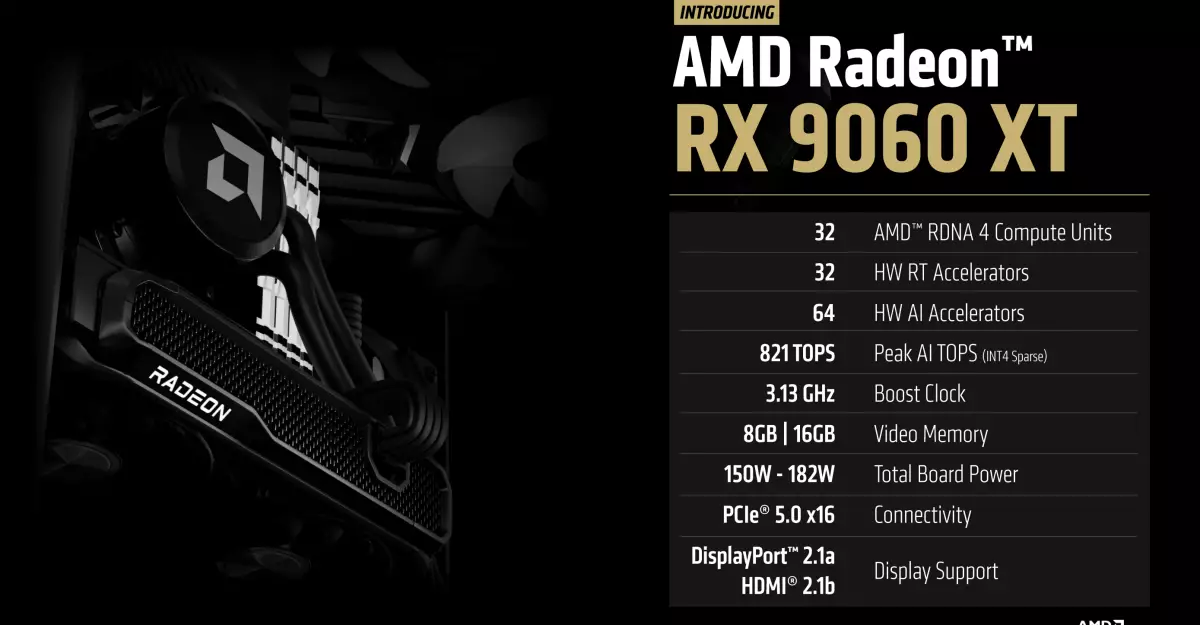At the recent Computex event, AMD announced the much-anticipated Radeon RX 9060 XT graphics card, a significant leap within the ever-evolving landscape of GPUs. While AMD refrained from revealing pricing or a release date, the anticipation surrounding this flagship model is already palpable. Positioned to rival Nvidia’s recently launched RTX 5060, the RX 9060 XT promises to bring new capabilities to the gaming community, including options for 8GB and 16GB of VRAM, which have stirred plenty of debate among enthusiasts and professionals alike.
The VRAM Controversy
One of the most contentious debates in the GPU world currently revolves around VRAM allocations. In a rather perplexing move, both Nvidia and AMD have opted for 8GB VRAM variants in an age where games are achieving staggering graphical fidelity and demanding higher memory consumption than ever. This has raised eyebrows across the gaming industry, as players ponder the adequacy of 8GB in current and upcoming gaming titles. The RX 9060 XT matches its competitor’s offerings but presents an opportunity for AMD to either validate or rectify the situation with its higher VRAM option. Gamers are rightfully concerned that compromising on VRAM might limit their gaming experiences, diminishing performance during intense gameplay.
Specifications That Impress
The RX 9060 XT boasts a robust configuration, featuring 32 RDNA 4 compute units and a boost clock of 3.13GHz. Such specifications are indicative of AMD’s commitment to offering high-end performance aligned with gamers’ demands. The support for cutting-edge technologies such as DisplayPort 2.1a and HDMI 2.1b enhances its appeal further, ensuring compatibility with the latest displays. The total board power ranging from 150 to 182 watts suggests that this GPU is not just a powerhouse but also relatively efficient—a necessary trait as sustainability becomes more critical in tech manufacturing.
Nvidia’s Market Strategy Under Fire
Curiously enough, Nvidia’s strategy leading up to the RTX 5060’s launch has come under scrutiny as well. It’s reported that the GPU giant restricted reviewers from accessing necessary drivers before the release, ostensibly to manage initial impressions regarding their controversial 8GB VRAM spec. This move has incited backlash not only from gamers but also from influential tech YouTubers, as seen in a revealing video by Gamers Nexus. Here, they shed light on the corporate tactics Nvidia utilized to sway discussions surrounding its Multi Frame Generation feature, which raises questions about transparency in GPU marketing.
The Road Ahead
As AMD prepares to enter a fiercely competitive GPU marketplace, the reception of the Radeon RX 9060 XT will undoubtedly shape the future course of both AMD and Nvidia. While the lack of price and release date is a stumbling block at the moment, the intrigue around AMD’s strategic decisions reflects a larger narrative of consumer expectations. Gamers are increasingly discerning; choices made by AMD and Nvidia will be scrutinized and could influence their purchasing decisions. The implications extend beyond mere specifications, delving into the ethos of what it means to create graphics technology in a time when expectations are higher than ever. It’s a rich tapestry of innovation, rivalry, and consumer sentiment that promises an exciting future in the realm of gaming graphic technology.


Leave a Reply